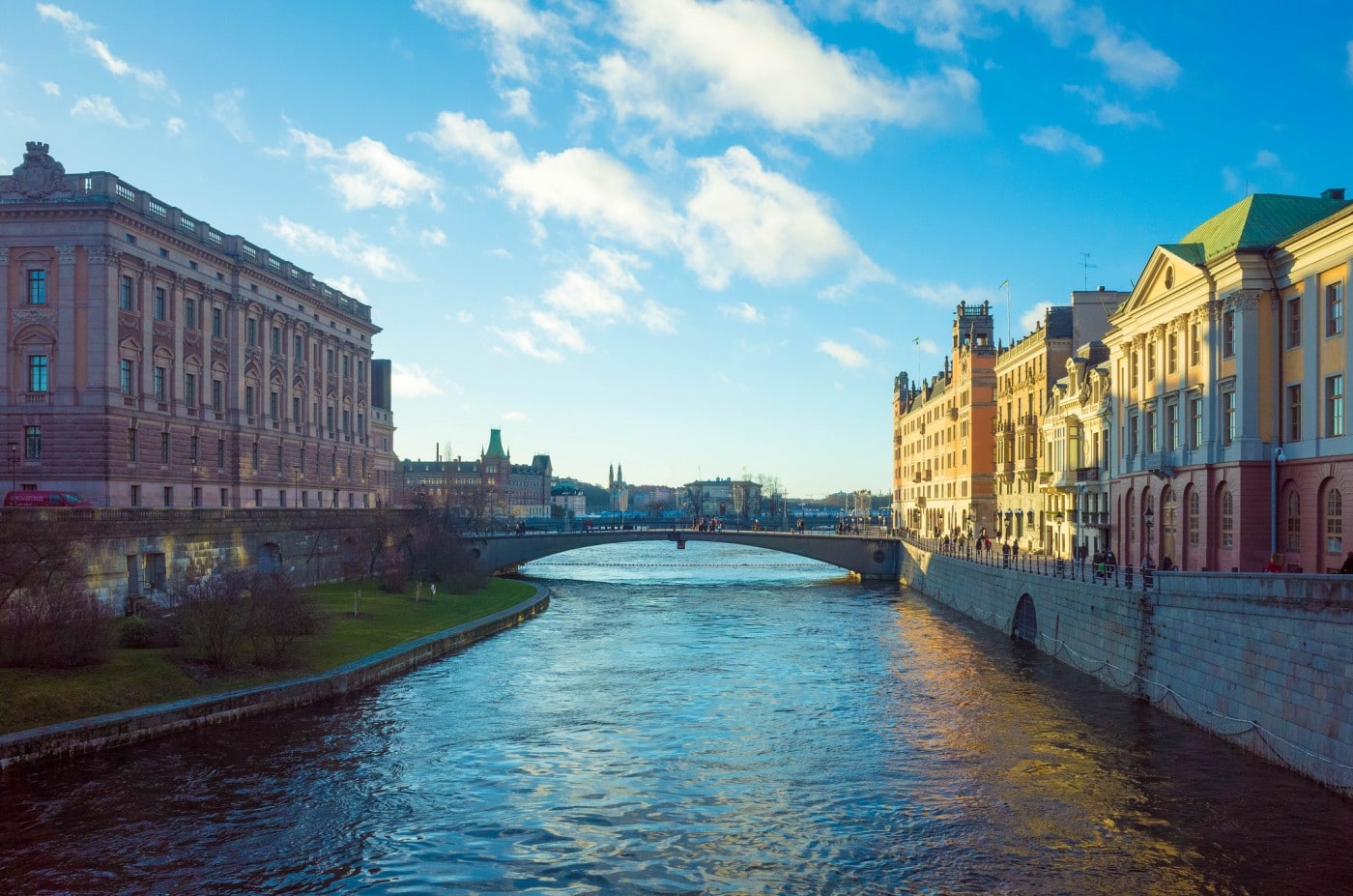Cover Image by Tarquin Gemstone at Flickr
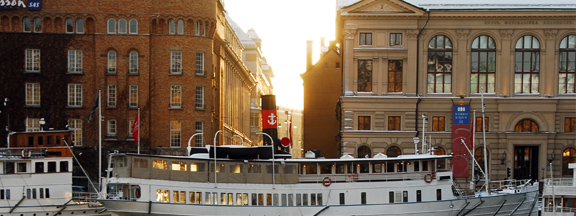
I didn’t realize it when I made my plans and still didn’t realize it a month later when I landed at Stockholm’s Arlanda airport. Rushing through customs and boarding the express train into central Stockholm, there were clues. “Hmm … the skies are really gray,” I said to myself, maybe there’s snow on the way.” It was just before two in the afternoon. Twenty minutes later as I pulled into the station in darkness, it dawned on me. It was winter in Scandinavia.
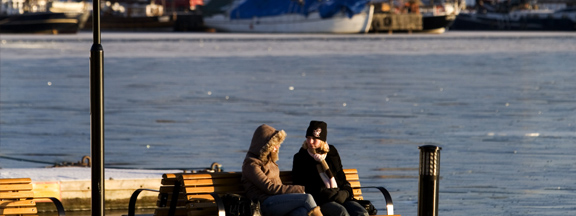
Sure, in Sweden’s capital city, which just happens to sit a few degrees south of the Arctic Circle, snow might very well be in the forecast. In the glow of the streetlights, I could see that there was a little dusting on the ground. But snow had nothing to do with the sun setting in the middle of the afternoon. December 21st isn’t just the first day of winter, but also the shortest day of the year. When you’re as close to the Arctic Circle as Stockholm is, the shortest day of the year is pretty darn short, as are the days before and after it. I was officially in the land of the midnight sun at the time when it was actually the land of the noontime moon.
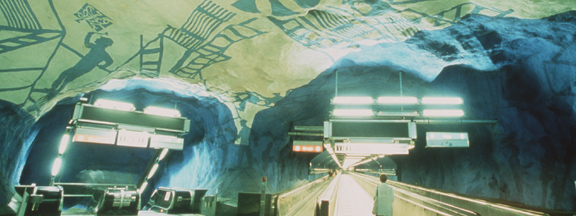
I’ll admit I was disappointed at first. Like so many people I like to get to know a place by walking around. Once I wore a pedometer on one of my self-guided (or really unguided) getting-to-know-your city tours and logged 23 miles in a single day! What could I discover with a three hours of daylight? As it turns out I experienced more of Stockholm than I would have had I visited during summer solstice, when there’d be 20 hours of sunshine shining during my speed walking. It’s a strikingly beautiful city with distinct neighborhoods, brilliantly designed buildings and a shocking number of public parks wonderfully spread across the 14 islands that make up the city. With a resident as a guide, I learned it’s better to slow down, wander, eat, drink, sauna and soak. With so little daylight as a distraction, I could nurture another side of myself and when the urge to be a typical tourist was just too overwhelming to ignore, I could give in. On that note, sadly the ABBA museum that was scheduled to open prior to my hitting town was behind schedule.
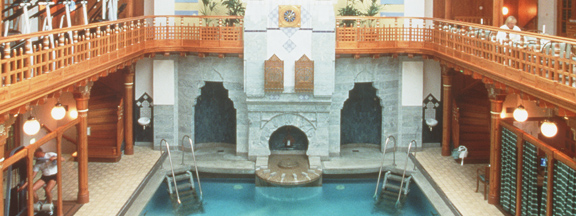
Because old habits die hard, I insisted on walking whenever possible. When I couldn’t, I surprised myself by taking the artfully conceived Metro system, rightfully billed by the city as the “world’s longest art exhibition.” There are 100 stations along 68 miles of track, 90 of which feature original art by more than 150 artists, and that accounts for just the permanent works. In 1957, Jorgen Fogelquist did a Spanish tile mural in the T-Centralen station and in 1965 Siri Derkert used a special sandblasting technique in the Ostermalmstorg station to create another mural on concrete. At Sockenplan, artist Sture Collin’s sculpture “Ship of Fools” is a three dimensional interpretation of the medieval assumption that the earth was flat. In order to accommodate art that wouldn’t survive long-term in the tough environment, a handful of stations – Odenplan, Slussen, Fridhemsplan, Zinkensdamm and Gardet – exhibit up to four temporary works a year.
Soak and Sauna
There are spas everywhere in Stockholm. Yasuragi at Hasseludden for example is in the Japanese tradition with hot springs and a range of body treatments. It boasts amazing views of the Stockholm archipelago. The Blue Hotel has the Blue Hamam Wellness Center, complete with a Turkish hammam. The new Selma City Spa at the Clarion Sign Hotel has a rooftop pool and features Decleor facials. Only one spa though is to the city what the Geller Baths are to Budapest: Sturebadet.
Opened in 1885 and a favorite of Garbo’s, Sturebadet today is a recreation of the original which burned to the ground in 1985. The owners had planned to construct a mall on the site but wisely the city stepped up to the plate and declared that the mall could only happen if the main pool and Turkish bath were rebuilt exactly as they were pre-fire. That’s why now Sturebadet, with a pool identical to the original and a Turkish bath that replicates the one Garbo spent so much time in, is a mall inside. Oddly enough, what feels weird about this is that you can look down from the gym floor into a bakery.
While it seems that nearly the entire country mourned for the place after the fire, the few with no sentimental attachment to the original can now be openly thankful. Sturebadet today features exquisitely detailed copies of the artisanal tilework that made the original structure such a gem but it also has every modern convenience a patron could wish for: spacious studios, a well-ventilated gym, Vichy showers with Kerstin Florian amenities, and countless treatment rooms for facials, massages and body treatments. The spa menu lists a whopping 50 services!
Eat and Drink
Surely you’ve heard of smorgasbord which was introduced by the Swedes to the world at the 1939 New York World’s Fair. An all you can eat buffet of hot and cold dishes, including as many as a dozen preparations of herring, smorgasbord like fondue is best if it’s your only meal of the day. Even if you take just a single bite of everything – and it’s difficult not to – you’ll be fuller than your waistband will allow. Goldolen, perched high above the waterfront in the Sodermalm neighborhood has one of the best in town complete with incredible views, especially of the nearby Gamla Stan (Old Town in Swedish).
I’m guessing you might not know that Swedes drink more coffee than almost anyone else and they’ve got the coffeehouses to prove it. To put their addiction in perspective, Swedes consume on average over 22 pounds of coffee a year whereas Americans, who have the benefit of a Starbucks on almost every corner consume nine. This is astounding when you consider that there is only a single Starbucks in the entire country which just opened in the airport. I guess you could say that Starbucks may be poised for an enormous expansion here? Since choosing a coffeehouse can be as personal as choosing your underwear, I’m not going to tell you which ones I think are best. I will say that I visited over a dozen – several more than once – and there wasn’t one I didn’t like. Each had its own personality, and a take on the cinnamon roll, which seems to be the national pastry. Just don’t expect the super sweet and sticky, dripping with icing kind common in the states, and extras like chocolates and sandwiches.
I will venture to add however that the “counter” at Ridderbagiert overflows with so many seedy, crusty, hearty breads and rolls that you could almost forget you came in for coffee. There’s barely room for the cash register at the far end. At the tiny Tössebageriet, open in the same space since 1920, chandeliers, deep window pockets and well-worn marble floors mirror the mix of almost too beautiful to eat pastries served with your coffee. Their princess cake, a traditional Swedish delicacy created by the Royal Confectionist in honor of the sisters of the current king, Carl XVI Gustaf, is particularly good. In case you’re wondering what’s hiding under that green marzipan exterior, it’s sponge cake layered with whipped cream and custard.
To find your favorites, pick up a copy of Ann-Catrin Spole’s 2007 book, The Best Cafés, Chocolateries and Teahouses in Stockholm. Although it’s slightly dated, I found it pretty accurate.
Wander
A winter visit to Stockholm is good for getting a taste of how the locals live, but it’s also prime time for avoiding crowds. Take Kungliga Djurgården (“The Royal Game Park”). Over ten million people visit annually but you won’t miss them in December. Spend the daylight hours wandering around this nature island in the center of the city and pop into Skansen, the world’s first open air museum. Intricately paved pathways and mulched trails wind over, around and throughout. I was fortunate to have my friend’s bike that day and felt like a real Stockholmer who typically thinks nothing of riding all winter long. Circumnavigating the island on foot would have taken me a full day but by bicycle I was able to scope out restaurants and cafes in the main business area, explore some pretty posh neighborhoods, and get lost on the narrow paths in the center of the island all in about two hours. Naturally you’ll want to explore everything in greater detail on foot.
Although some might say that it smacks of a Renaisance Festival-type atmosphere, Skansen is seventy-five acres of complete living environments, á la Colonial Williamsburg, with fully furnished houses occupied by people in period costume surrounded by domestic animals in a natural landscape. Demonstrating occupations such as weaving, spinning and pottery making, Skansen has grown to include about 150 historical buildings, mostly dating from the 18th and 19th centuries and transported to the grounds from all over Sweden. The museum also includes a zoo with 60 different animal species, many native to Scandinavia such as the brown bear, elk, wolverine, and of course reindeer.
Typical Tourist
With over 100 museums, no two lists of the city’s best will be exactly the same. There is one you shouldn’t miss though and anyone who’s ever been to Stockholm knows that the Vasa Museum is exemplary.
It’s understandable at first to be a little wary of the this museum. After all it has one exhibit – a warship – which doesn’t sound that interesting for anyone non- seafaring. Don’t think twice about it … it’s fascinating. The Vasa set sail on its’ maiden voyage in 1628. It fired an impressive 64 gun salute (a huge number for that day) before a gust of wind caught its sails and it promptly began to keel over. Somehow it righted itself then keeled over again. Within minutes it sank, killing some 50 of the 150 passengers and crew onboard. It sat mostly forgotten at the bottom of Stockholm’s harbor in the mud until 1961. Reconstruction and building a museum around it took nearly 30 years, but the end result is a spectacular showcase of the world’s only surviving 17th century warship. It’s a showcase that even non-seafarers can enjoy thanks to exhibits about how the ship was built, how it was found, raised and restored, the lives of the 25 people whose skeletons were uncovered when it was brought up as well its’ booty of 700+ carved sculptures.
Your best bet playing tourist in Stockholm is with the Stockholm Card, which allows access to 75 attractions, as well as the Metro and buses for 24, 48 or 72 hours. Most museums are closed Mondays so keep this in mind when deciding when you’ll be using it.
Where to Sleep
Grand Hotel: There aren’t many hotels worthy of their own book but then there aren’t many that have been regarded as a continent’s finest for over 125 years. The Grand Hotel is one of the most beautiful buildings on Stockholm’s waterfront and one of Europe’s leading hotel groups since 1874. Every December, Nobel laureates stay here when they’re in town to pick up their prizes. You can buy the book “Grand Hotel Stockholm” in the property’s gift shop.
Södra Blasieholmshamnen 8, 103 27 Stockholm, Sweden. + 46 08 – 679 35 00
Lydmar Hotel: With two ivory-colored moose busts guarding the otherwise unremarkable single-door entrance and a lobby that manages to successfully pair furniture that wouldn’t be out of place at Versailles with pop paintings of superheroes and outsize war photos, there’s no doubt why Lydmar Hotel is on Conde Nast Traveler’s 2009 Hot List. Situated between the Grand Hotel and the National Museum, its’ rooms are spacious – 76 were originally planned, but it was decided 46 would be more civilized – and the public areas actually invite you to hang out in them (one even has a grand piano).
Södra Blasieholmshamnen 2, 103 24 Stockholm, Sweden. +46 08-22 31 60
Where to Eat and Drink
Saturnus: You’ll want to keep coming back to this place. Tucked away on a side street off the main drag Birger Jarlsgatan in the Norrmalm area. The challenge is to get something other than the cinnamon roll, which is likely bigger than your head and according to my unscientific but highly diligent research, the best in town.
Eriksbergsgatan 6, 114 30 Stockholm, Sweden +46 08-611 77 00n.
Sturekatten: Feeling nostalgic for a visit to your grandparents and wanting some delicious apple pie or a Swedish open-faced beet sandwich (so much better than it sounds)? Sturekatten, in a narrow, four-story house built in the 1700s and complete with surly elderly staff (the two women behind the counter here were the only people who didn’t drown me with smiles during my entire time in Stockholm), is a mish-mash of crocheted tablecloths and ceramic tchotkes in the windows. It actually doesn’t sound that appealing, but it’s one of the cutest, coziest cafes in town and the apple pie really is awesome.
Riddargatan 4, 114 35 Stockholm, Sweden. +46 08-611 16 12.
Brasserie le Rouge: All the red velvet in this non-touristy Gamla Stan restaurant and bar might be overly dramatic, but the food is great. Try more of it by ordering from the small items menu. My favorites were the seafood brioche and Moroccan meatballs. The cheese plate served for dessert is a meal in itself.
Brunnsgrand 2-4, 111 30 Stockholm Sweden. +46 08-505 244 30
Gondolen, Stadsgården 6, 104 65 Stockholm, Sweden. +46 08-641 70 90
Ridderbagiert, Riddargatan 15, 114 57 Stockholm, Sweden. +46 08-660 33 75
Tössebageriet, Karlavägen 77, 114 49 Stockholm, Sweden. +46 8 662 2430
XOKO, Rörstrandsgatan 15, 113 40 Stockholm, Sweden. +46 08-31 84 87. Unfortunately their website, www.xoko.se, is only in Swedish.
What to See and Do
The Stockholm Metro: For more information (in English) on the art in the city’s metro, including a map of the stations and the art at each one, go to http://www.sl.se/templates/Page.aspx?id=4665.
Vasa Museum: On the island of Djurgården, the Vasa Museum will make you appreciate that there are only a few hours of light daily. If it was light outside, I’d never think to spend several hours inside a museum but the Vasa drew me in and held me captive.
Stockholm-Vaxholm Archipelago Tour: Winter boat tours don’t allow time for you to disembark at Vaxholm, a popular summer resort town a short distance from Stockholm, but that doesn’t mean the three hour boat ride there and back isn’t worthwhile. Some of the best views of Stockholm (and also Vaxholm) are from the water and as you’re floating around the archipelago, you’ll pass castles, grand homes and summer cottages, not to mention dozens of islands, some no bigger than a football field.
Sturebadet: Sturegallerian 36, 114 46 Stockholm, + 46 8 545 015 00
Helpful Info
The Stockholm Card is available at the Stockholm Tourist Center, Hamngatan 27, Entre Kungstradgarden, 103 27 Stockholm, Sweden. It is also available online and at 130 locations around the city
Cover Photo by Tarquin Gemstone at Flickr. Click here for more images by Tarquin Gemstone

